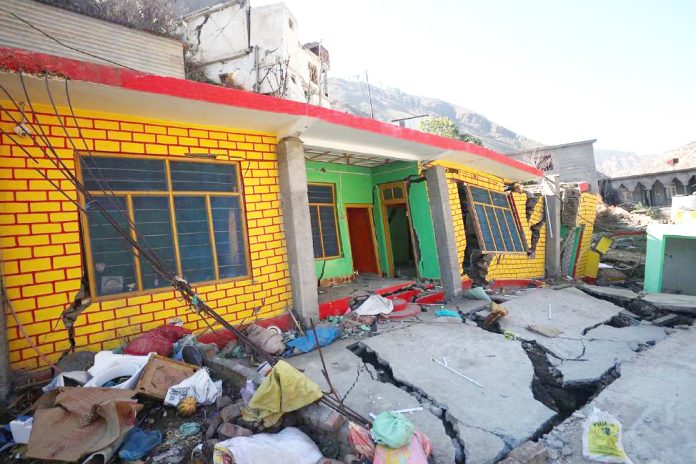By Chankaya
After the disaster of Joshimath, it is not the turn of another town, Nai Basti in Thathri sub-division of Jammu and Kashmir’s Doda district, to be threatened with dire consequences as massive cracks appear.
The villagers of Nai Basti, where land subsidence has so far damaged 22 houses and displaced 300 people, feel that they are caught between the devil and the deep sea.
Assistant Professor in the geology department of the University of Jammu, Yudhvir Singh along with former head of department of geology, University of Jammu, Prof G.M. Bhat and two scholars visited Thathri’s Nai Basti to ascertain the cause of cracks in the portion of a residential colony. “We have not found traces of the sinking of Nai Basti, Thathri. However, what we have observed during our investigation is that cracks are still open. If the cracks are not sealed in time, we apprehend the situation may further aggravate,” he has been quoted as saying.
He said, “As per our observation in Nai Basti, it is not a sinking that resulted in cracks in structures. We have noticed that the structures have been constructed on hard rock. Although the floor of the masjid has also developed cracks, it is not due to sinking. The masjid is constructed on hard rock.”
Pertinently, 21 structures including 19 residential houses, and two religious places were declared unsafe and 300 people were evacuated to safer places after their structures developed cracks.
Over 100 members of 19 families were evacuated in Nai Basti village in Jammu and Kashmir Doda district after over two dozen concrete buildings developed cracks.
Athar Amin Zargar, sub divisional magistrate of Thathri, the area under which Nai Basti falls, said that the problem of the ground shifting does not seem to have grown in area, but existing cracks have widened.
“The situation is under control. The zone of influence hasn’t spread since Thursday and no new structure has developed cracks, which is a positive thing for us. However, cracks in the damaged houses within the zone of influence have increased,” he said.
A team from the Geological Survey of India (GSI) has visited the area to identify the extent of the problems and the causes behind it. Zargar said the report “is yet to be submitted to the government.”


Doda region falls under seismic zone category 4, which means it is extremely vulnerable to earthquakes.
Zargar said that since Thursday the status of the affected houses remained the same.
Officials in J&K’s Ramban district’s Ramsu separately said that around eight to ten days ago, the police shifted four families to a government high school after their houses developed.
Ramsu SHO, inspector Naem-ul-Haq said “a road construction work—part of the national highway project, is on in the area, for which the authorities had acquired land where two houses were constructed. During rains around 10 days ago, the two houses, which were vacant, collapsed. However, rains triggered sliding of the land which has 12 houses over it”.
Doda Deputy Commissioner Vishesh Paul Mahajan said the GSI experts visited the affected Nai Basti village in Thathri tehsil to know the reason for the cracks in 19 residential houses, a mosque and a religious school for girls.























